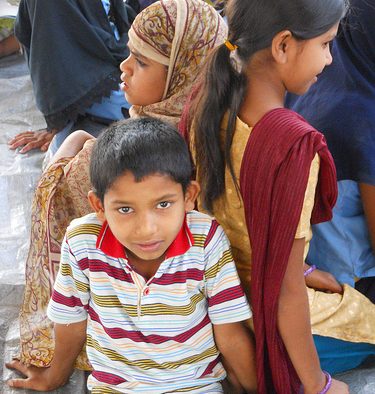For The Love of Reading : Hippocampus Reading Foundation

Via Forbes India
The Malhotras were a typical IT couple and had just moved back to Bangalore in 1999 with their four-year-old son Tarutr, after nearly eight years at Infosys in California. But little Tarutr was bored. What he and his mother missed the most was a good library. Vimala says, “We used to go to the library for my son, and it had so many activities; back in India, the lack of a good library where children could have their space, where no one tells them to keep quiet, and it is their hangout zone was lacking.”That got her thinking about setting up a library.
Meanwhile, Umesh Malhotra had started an IT company of his own, called Bangalore Labs, along with four other promoters. But he too was soon weary of it and sold his stake in 2002. After he quit, there were many job offers but this time he wanted to make sure he was heading in the right direction.
“I waited nine months. I thought, let me think through what I want to do in life. My wife wanted to start a library and I said okay, I think I can be the project manager, and that began in March, 2003.”
cc licensed flickr photo shared by Pratham BooksTheir brainchild was called Hippocampus, named after the part of the brain associated with learning and memory. It was set up in Koramangala, Bangalore.
Hippocampus is not just a library. It is, as Vimala imagined it, a kids’ hangout zone. Children can sit in corners reading a book; they can sign up for various activities like painting, aero modelling, carpentry or sign up for a science club. In fact, it is these activities that engage the child’s interest that has made the library a success.
Umesh Malhotra wanted to do more. “We created a great space for urban kids, but what is happening in the slums of Bangalore?” he says.
He started meeting government schools and development sector workers to understand why they did not have or even think of having a library. “In many ways I started advocating it.”
His initial response though, was to give money to people to help buy books and run libraries in the slums. Big mistake!
“The two or three people we had given money to, their libraries never worked because they were always giving us excuses, ‘you know children are not interested; I can’t find someone to run a library’, and I thought, come on, I just spent Rs. 40,000 on a library and you are giving me these excuses,” says Malhotra.
He knew he could not do this on his own, and he knew the model had to be tested. What worked for a city library may not work for a government school library. For one, reading abilities were different and an English books-based library may not work. So he partnered with the Akshara Foundation, which was internally discussing the same issue: The need for libraries in government schools.
In their trial-and-error testing period between 2004 and 2006, they built 52 libraries around Bangalore. And in the process, found a model that could work for government schools.
This model has three arms: Hippocampus, the parent library, runs for profit; Hippocampus Reading Foundation (HRF) focusses on government schools in cities and the rural areas; and a Book Council sorts through content from various publishers and drafts catalogues for urban poor, and rural children.
HRF sets up libraries by partnering with local NGOs, who finance and maintain these libraries.
For Hippocampus, the Malhotras had gone through a list of 20,000 titles to choose 3,000 which they ordered from the US. But for HRF, they needed to localise the content.
The books are matched to the children’s reading levels which are graded under a colour coding system called GROW BY Reading (GBR). The acronym GROW BY stands for green, red, orange, white, blue, and yellow — green is the lowest level and yellow the highest. GBR also creates activities around the books that take the children beyond the content in the book. For example, they make animal masks based on a book they read on animals or discuss issues raised in the books.
In the urban poor areas, these libraries are already making a difference. Children’s reading levels are up between 30 and 70 percent.
Now, Malhotra wants to expand the library network to rural areas.
Read the entire article here.









